The David Brown 1410 and 1412 models made their debuts in December 1974. These were the most powerful tractors produced by the Yorkshire-based manufacturer at the time and featured a new 91hp turbocharged version of David Brown’s 3.6-litre four-cylinder engine.
The 1410 was equipped as standard with David Brown’s four-range three-speed synchromesh manual gearbox. The 1412 used David Brown’s pioneering Hydra-Shift transmission, which had initially been introduced on the naturally-aspirated 72hp DB 1212 in 1971.
The Hydra-Shift transmission was a 12F/4R unit which combined hydraulically operated clutch packs and band brakes to drive two sets of epicyclic gears. This system provided four clutchless power-shift ratios in three forward ranges and one reverse.
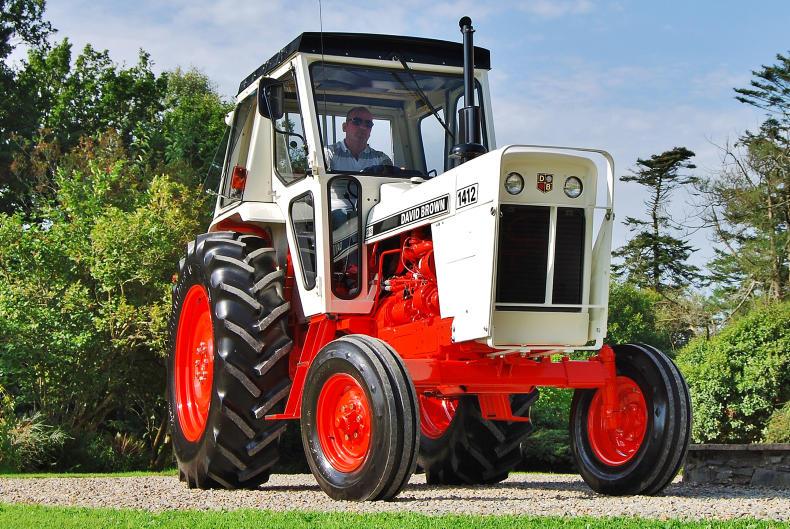
The four-cylinder turbocharged 1410/1412 tractors were David Brown's first tractors with a forced-induction engine. The price for this VQ-cab (wide-door) model in January 1979, was £8,312.
Greater power
In addition to offering greater power, the new models featured a larger-diameter clutch fitted with a heavy-duty lining. The back axle was strengthened and equipped with larger final drive units. Stopping power was provided by self-balancing oil-immersed disc brakes and hydraulic lift capacity of the tractors was increased from 1,000kg to 1,200kg.
In December 1975, David Brown introduced a new Q-cab, which would become standard equipment on all models by mid-1976. The following year, it introduced the Sekura Deluxe cab as an option on the 1210/1212 and 1410/1412 models, which was built at the Danish cab company’s factory at Barnsley in Yorkshire.
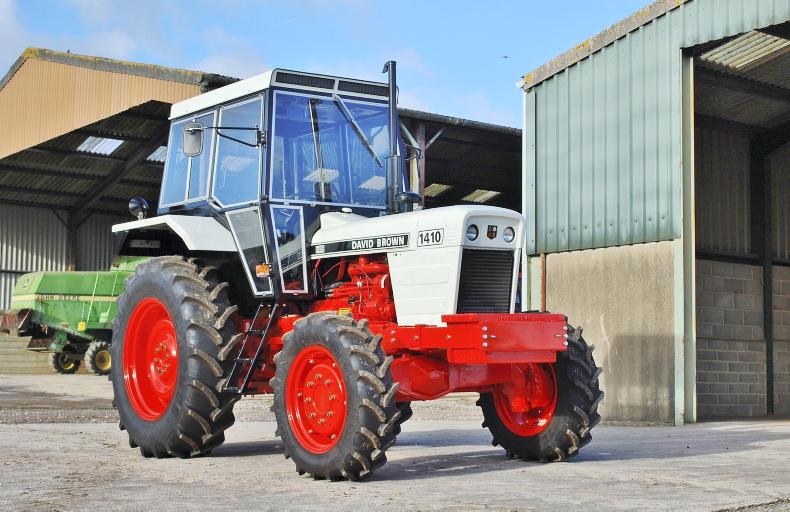
In 1974, David Brown which was owned by Tenneco-Case, adopted the poppy red and white livery scheme of the US-built Case models. It also included the word Case alongside the name David Brown.
Like the 1210 model, the 1410 was available with four-wheel drive. Introduced in 1976, the four-wheel drive 1410 was equipped with a German-built Kramer unit, which replaced the Selene axle previously used by David Brown since 1970.
The Kramer axle used a staggered driveline, which directed power from the axle half-shafts down to reduction hubs located inside the front wheels. While this configuration undoubtedly offered higher ground clearance, the extra height significantly raised the front of the tractor.
To counteract this, the final drive hubs on the rear axle were rotated to raise the rear of the tractor. The result of this, was that four-wheel drive versions of the 1210/1410 stood almost 8in taller than their two-wheel drive equivalents.
Design changes
To accommodate this height increase, David Brown had to incorporate a whole host of design changes. These included cab panel extensions, longer cab steps, longer link arms, longer drop arms and extended pick-up hitch side-plates.
On four-wheel drive models equipped with the Sekura cab, a large spacer plate was installed between the side windows and tractors fenders. The additional height of the cab made the tractors appear extremely tall, although visibility from the driver’s seat was reportedly exceptional.
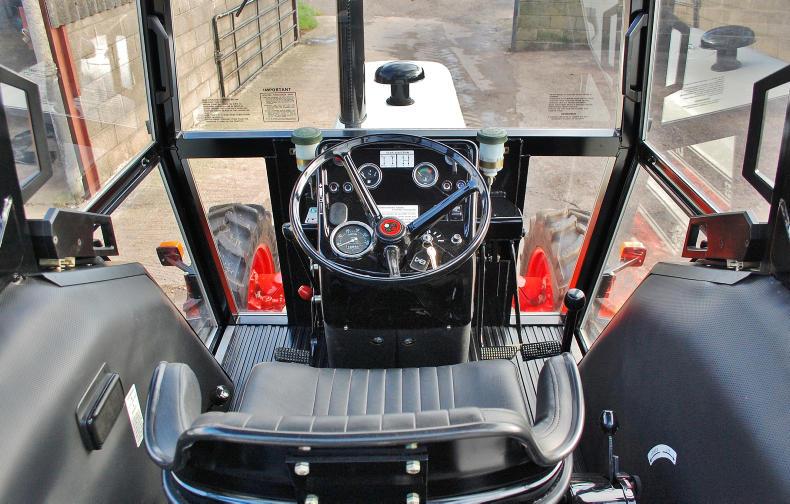
David Brown 1410 Sekura Cab interior
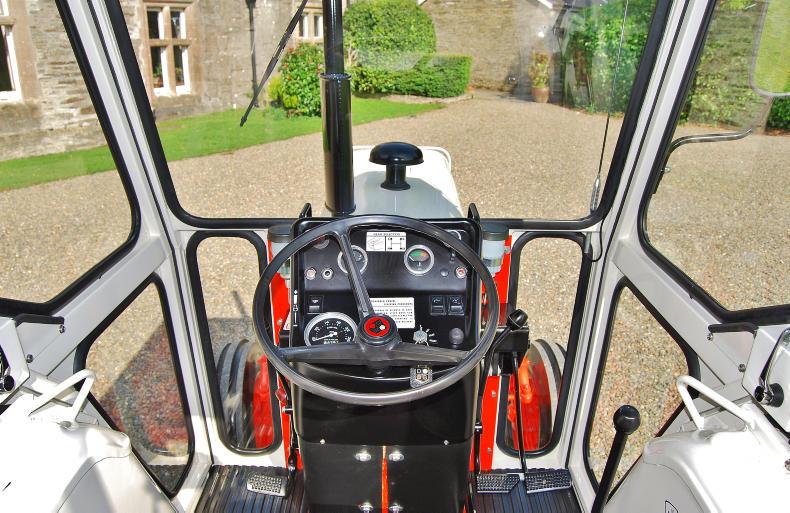
David Brown 1412 VQ Cab interior.
The 1410/1412 models were produced from December 1974 until January 1979, when mainline production ended. The tractors were then produced in limited numbers, primarily for export, until January 1980. In March 1979, the Kramer axle was replaced by a MK III Carraro axle which didn’t require any modifications to be made to the tractor. Only a handful of 1410 models with Carraro axles are believed to still exist.
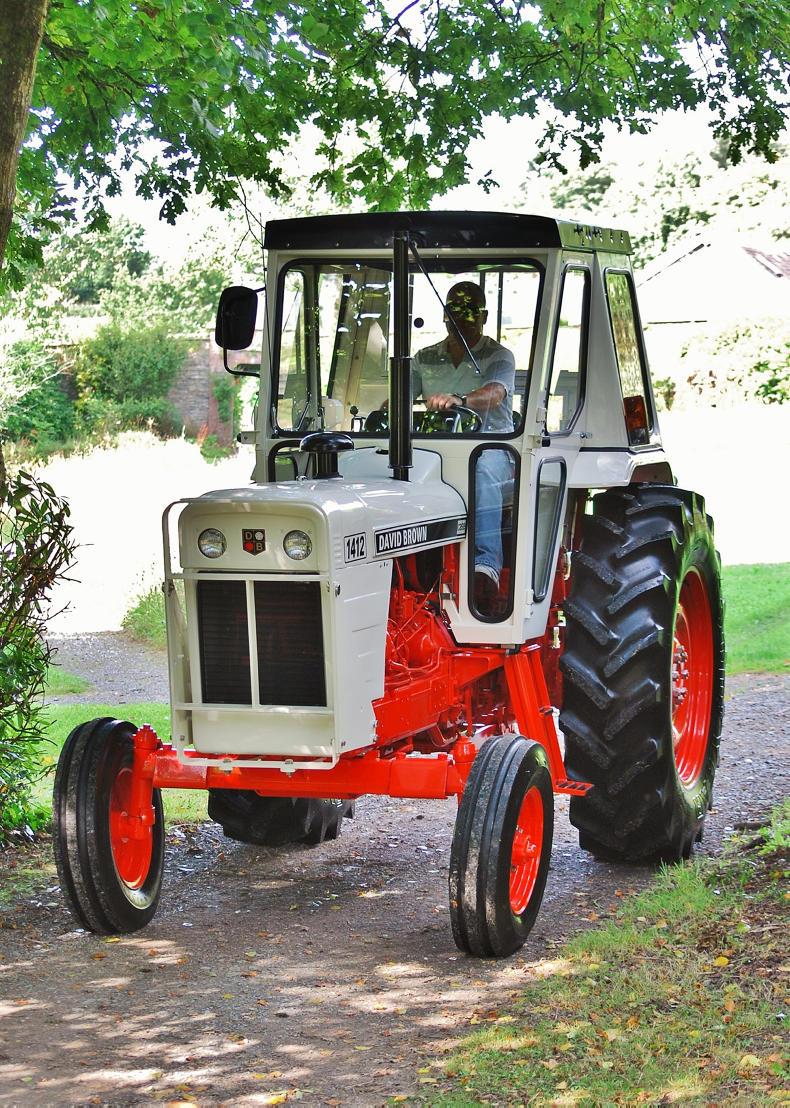
DB 1412 models were never offered with a driven front axle due to the inability of the Hydra-Shift gearbox casting to withstand the strain of operating a four-wheel drive system.
The Hydra-Shift-equipped 1212 and 1412 models were never offered with a driven front axle. This was fundamentally due to the inability of the Hydra-Shift gearbox casting to withstand the strain of operating a four-wheel drive system. In fact, four-wheel drive wouldn’t appear on a Hydra-Shift tractor until the introduction of the DB-Case 94-Series in 1983.

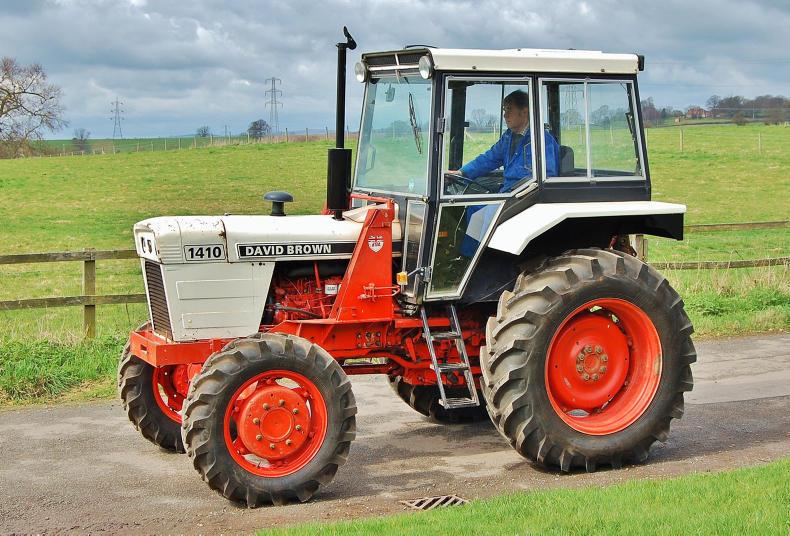




 This is a subscriber-only article
This is a subscriber-only article















SHARING OPTIONS: